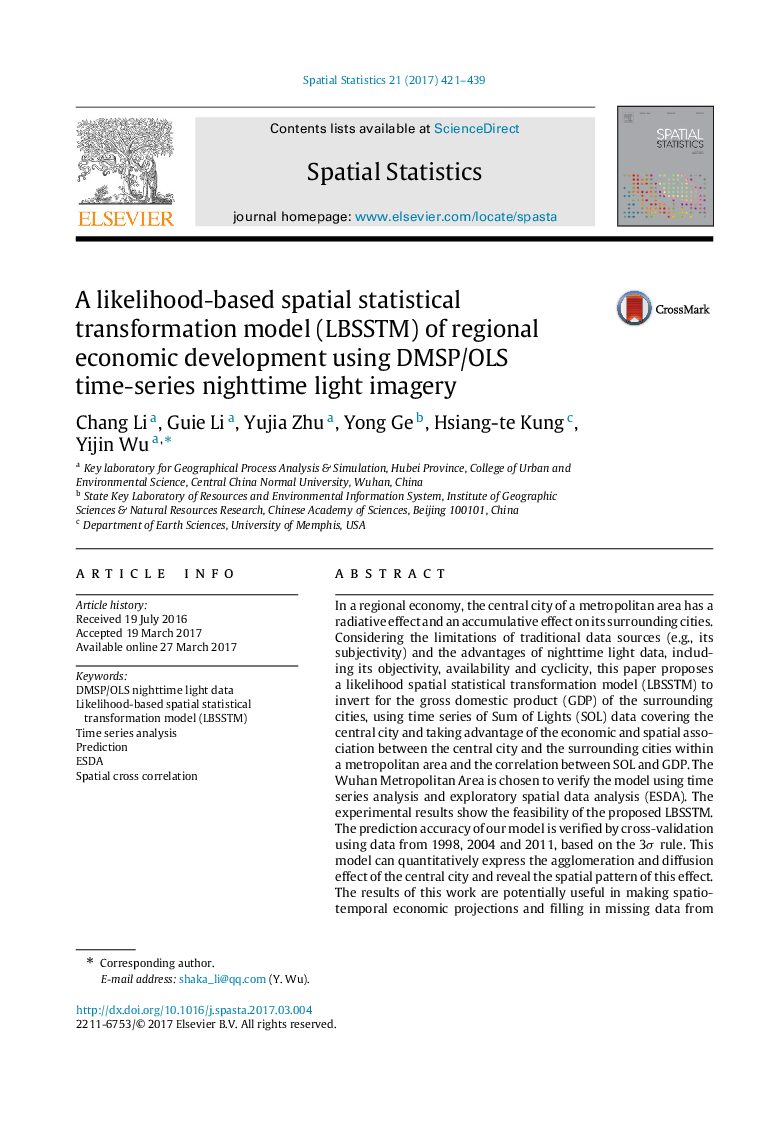| Article ID | Journal | Published Year | Pages | File Type |
|---|---|---|---|---|
| 5118980 | Spatial Statistics | 2017 | 19 Pages |
In a regional economy, the central city of a metropolitan area has a radiative effect and an accumulative effect on its surrounding cities. Considering the limitations of traditional data sources (e.g., its subjectivity) and the advantages of nighttime light data, including its objectivity, availability and cyclicity, this paper proposes a likelihood spatial statistical transformation model (LBSSTM) to invert for the gross domestic product (GDP) of the surrounding cities, using time series of Sum of Lights (SOL) data covering the central city and taking advantage of the economic and spatial association between the central city and the surrounding cities within a metropolitan area and the correlation between SOL and GDP. The Wuhan Metropolitan Area is chosen to verify the model using time series analysis and exploratory spatial data analysis (ESDA). The experimental results show the feasibility of the proposed LBSSTM. The prediction accuracy of our model is verified by cross-validation using data from 1998, 2004 and 2011, based on the 3Ï rule. This model can quantitatively express the agglomeration and diffusion effect of the central city and reveal the spatial pattern of this effect. The results of this work are potentially useful in making spatio-temporal economic projections and filling in missing data from some regions, as well as gaining a deeper quantitative and spatio-temporal understanding of the laws underlying regional economic development.
